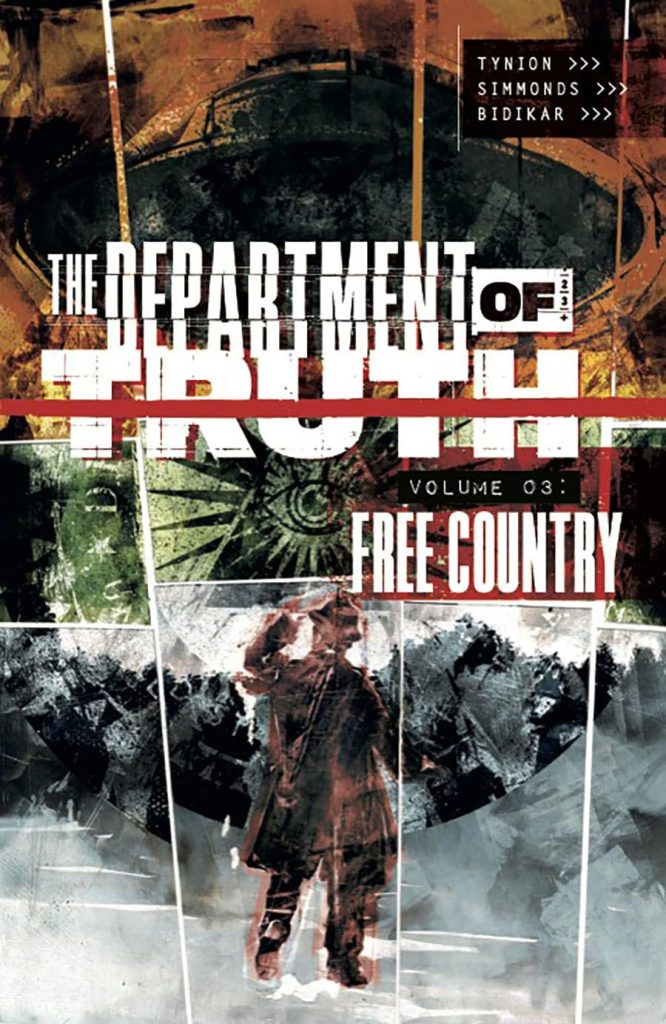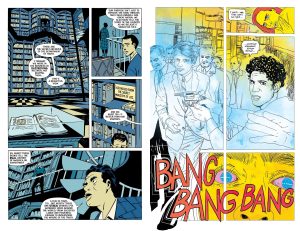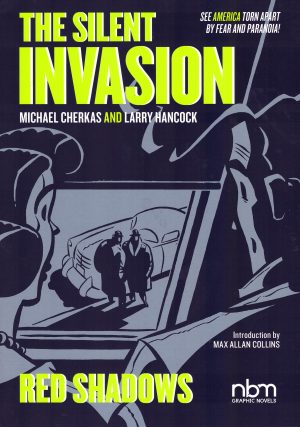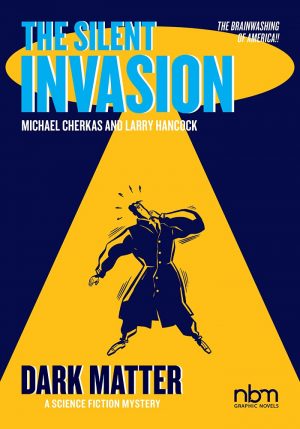Review by Frank Plowright
The collected versions of The Department of Truth shift about the published order of the serialised comics, which, when concerning what the series is about, can be perceived as quite the meta joke. If you want to believe the most plausible reason it’s that regular series artist Martin Simmonds needs the occasional break in order to maintain his high standards, necessitating fill-ins by other artists. But you don’t have to believe that. Hell son, didn’t his art look slightly different after the first couple of those fill-ins by Elsa Charettier and Tyler Boss? Are you keeping up?
James Tynion IV hands Charettier the story of Lee Harvey Oswald’s recruitment by the Department of Truth and how he comes to learn the truth, starting by learning Latin and reading an ancient fable. It’s stunningly rendered by Charettier (sample art left), drawing on the style of old illustrations and manuscripts to present a disturbing story revealing a brilliant idea about everyone being deceived in the 8th century.
Doc Hynes was introduced in The End of the World, but as an eccentric character in passing, yet his importance to the entire series is underlined by Boss drawing a chapter about him. It’s part as comics, and part intended to mimic the mimeographed fanzines of the 1950s to the 1970s, joyously lurid pulp illustration provided in purple. It seems just an interesting diversion until the purpose is revealed at the end.
John J. Parsons opts for a form of photo realism shredded in the digital mill for a chapter supplying not one, not two, but three fundamental answers to the series motivating forces. David Romero’s task is to supply illustrations accompanying interview transcripts. The result is a series of great pulp pictures, the sort of paintings that once appeared on SF paperbacks, some viscerally creepy and introducing a new threat.
From there it’s on to the 1960s in San Francisco, and what Counter-Culture Central has to offer about the workings of the world. There’s almost something of Guido Crepax about Alison Sampson’s delicate linework and the bright colours overlaid by Jordie Bellaire (sample art right).
It’s the final chapter by Jorge Fornés that supplies the spotlight central to many conspiracy theories as we see the faked film of the 1969 moon landing being created while glimpsing at the contrasting personalities of Richard Nixon and Frank Capra. It also introduces the idea of a Soviet Union counterpart to the Department of Truth, and that’s investigated further in The Ministry of Lies.
After the density of The City on a Hill Tynion supplying a few simpler stories is very welcome, and they’re all very readable if you buy into his experiment of mixing comics and other forms of storytelling as dossiers. Everything here is combined with the previous two volumes as The Department of Truth: The Complete Conspiracy Volume One.





